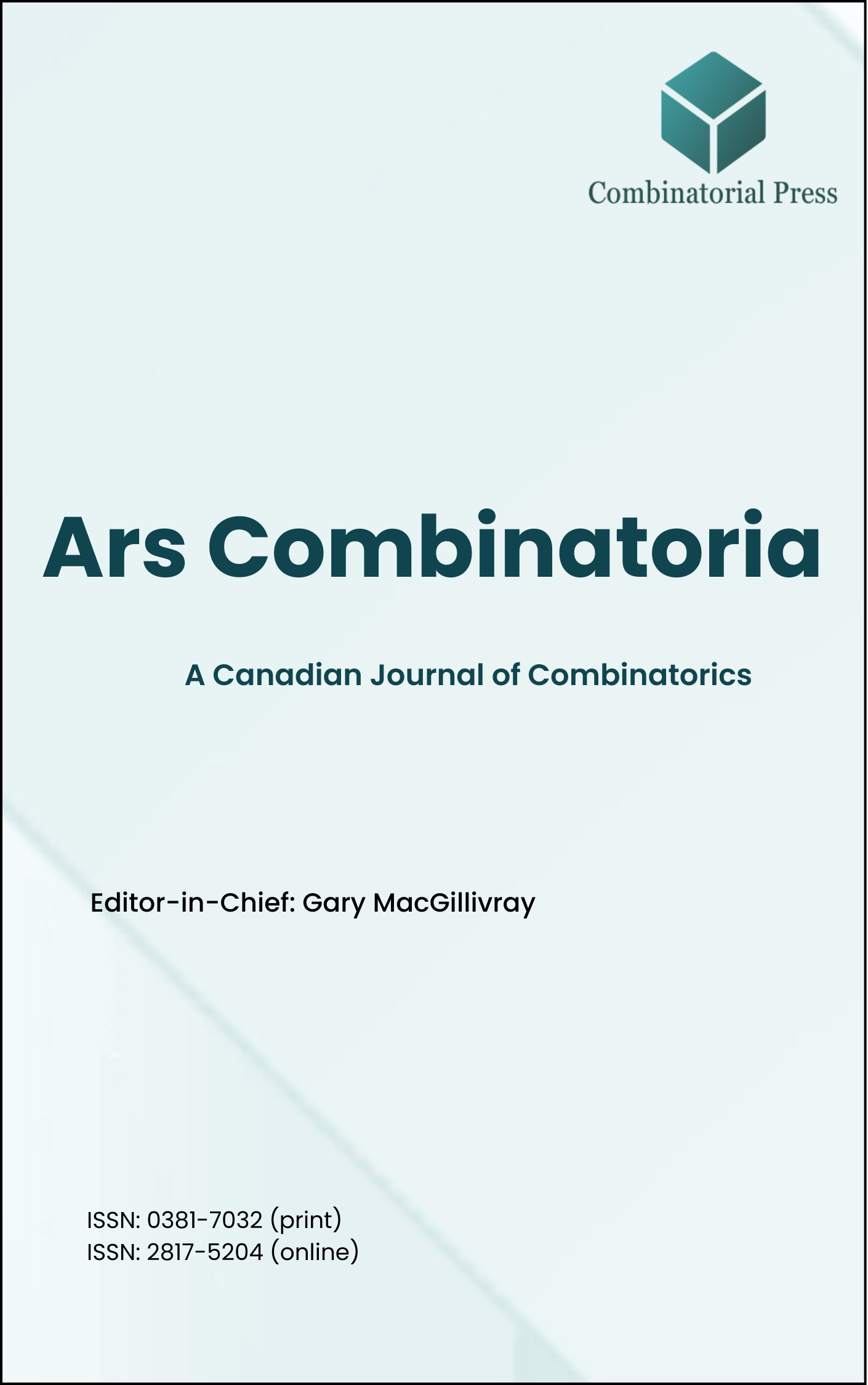
Ars Combinatoria
ISSN 0381-7032 (print), 2817-5204 (online)
Ars Combinatoria is the oldest Canadian Journal of Combinatorics, established in 1976. The journal is dedicated to advancing the field of combinatorial mathematics through the publication of high-quality research papers. From 2024 onward, it publishes four volumes per year in March, June, September and December. Ars Combinatoria has gained recognition and visibility in the academic community and is indexed in renowned databases such as MathSciNet, Zentralblatt, and Scopus. The Scope of the journal includes Graph theory, Design theory, Extremal combinatorics, Enumeration, Algebraic combinatorics, Combinatorial optimization, Ramsey theory, Automorphism groups, Coding theory, Finite geometries, Chemical graph theory but not limited.
Information Menu
- Research article
- https://www.doi.org/10.61091/ars162-15
- Full Text
- Ars Combinatoria
- Volume 162
- Pages: 205-212
- Published Online: 29/03/2025
The stretched Littlewood-Richardson coefficient
- Research article
- https://www.doi.org/10.61091/ars162-14
- Full Text
- Ars Combinatoria
- Volume 162
- Pages: 191-204
- Published Online: 29/03/2025
In this work, we study type B set partitions for a given specific positive integer
- Research article
- https://doi.org/10.61091/ars162-13
- Full Text
- Ars Combinatoria
- Volume 162
- Pages: 177-189
- Published Online: 29/03/2025
Suppose that
- Research article
- https://doi.org/10.61091/ars162-12
- Full Text
- Ars Combinatoria
- Volume 162
- Pages: 159-176
- Published Online: 29/03/2025
Let
- Research article
- https://doi.org/10.61091/ars162-11
- Full Text
- Ars Combinatoria
- Volume 162
- Pages: 149-157
- Published Online: 29/03/2025
Using generating functions, we are proposing a unified approach to produce explicit formulas, which count the number of nodes in Smolyak grids based on various univariate quadrature or interpolation rules. Our approach yields, for instance, a new formula for the cardinality of a Smolyak grid, which is based on Chebyshev nodes of the first kind and it allows to recover certain counting-formulas previously found by Bungartz-Griebel, Kaarnioja, Müller-Gronbach, Novak-Ritter and Ullrich.
- Research article
- https://doi.org/10.61091/ars162-10
- Full Text
- Ars Combinatoria
- Volume 162
- Pages: 123-148
- Published Online: 29/03/2025
Topological indices have become an essential tool to investigate theoretical and practical problems in various scientific areas. In chemical graph theory, a significant research work, which is associated with the topological indices, is to deduce the ideal bounds and relationships between known topological indices. Mathematical development of the novel topological index is valid only if the topological index shows a good correlation with the physico-chemical properties of chemical compounds. In this article, the chemical applicability of the novel GQ and QG indices is calibrated over physico-chemical properties of 22 benzenoid hydrocarbons. The GQ and QG indices predict the physico-chemical properties of benzenoid hydrocarbons, significantly. Additionally, this work establishes some mathematical relationships between each of the GQ and QG indices and each of the graph invariants: size, degree sequences, maximum and minimum degrees, and some well-known degree-based topological indices of the graph.
- Research article
- https://www.doi.org/10.61091/ars162-09
- Full Text
- Ars Combinatoria
- Volume 162
- Pages: 103-121
- Published Online: 22/03/2025
In 2003, the frequency assignment problem in a cellular network motivated Even et al. to introduce a new coloring problem: Conflict-Free coloring. Inspired by this problem and by the Gardner-Bodlaender’s coloring game, in 2020, Chimelli and Dantas introduced the Conflict-Free Closed Neighborhood
- Research article
- https://doi.org/10.61091/ars162-08
- Full Text
- Ars Combinatoria
- Volume 162
- Pages: 93-102
- Published Online: 22/03/2025
This paper investigates the number of rooted biloopless nonseparable planar near-triangulations and presents some formulae for such maps with three parameters: the valency of root-face, the number of edges and the number of inner faces. All of them are almost summation-free.
- Research article
- https://doi.org/10.61091/ars162-07
- Full Text
- Ars Combinatoria
- Volume 162
- Pages: 83-91
- Published Online: 22/03/2025
A graph is 1-planar if it can be drawn on the plane so that each edge is crossed by at most one other edge. In this paper, we confirm the total-coloring conjecture for 1-planar graphs without 4-cycles with maximum degree
- Research article
- https://www.doi.org/10.61091/ars162-06
- Full Text
- Ars Combinatoria
- Volume 162
- Pages: 71-81
- Published Online: 22/03/2025
For a graph





